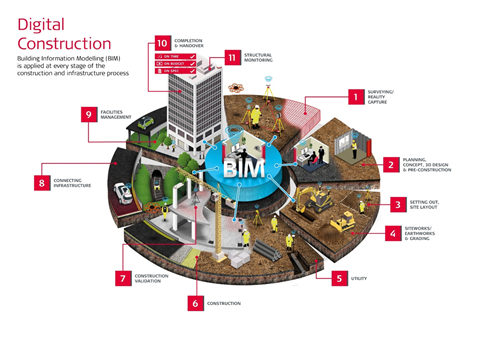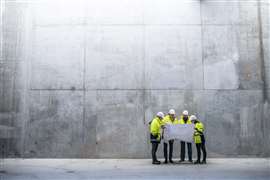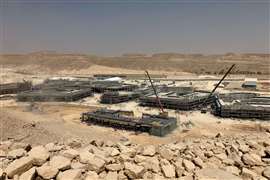What is BIM and how can it improve construction?
18 January 2022
Globally, the construction industry is on the up with forecasts suggesting sustained growth up to 2030, but the cost of delivery is getting higher.
That said, digital construction presents an opportunity to make operations more productive and to capitalise on market growth.
In this article, Leica Geosystems’ content marketing executive, Simon Hall, outlines the journey to digital transformation.
While construction has been slightly slower than other industries to innovate, the adoption of technology is starting to infuse all aspects of day-today life, from the now standard use of smart phones on site to digital plans.
However, more advanced uses of technology have the power to deliver even bigger cost and efficiency benefits, so shouldn’t be ignored or underestimated.
The advantages of digitised construction methods
Improved digital construction practices and tools can help bring projects in on time and on budget by making everyone involved more productive and eliminating mistakes.
The sharing of information in the form of digital data between all parties, through all stages of the construction process from concept to completion, can help bring the industry into the future and reduce legacy challenges such as delays and cost overruns by aligning to Building Information Modelling (BIM) principles.
 The role of BIM and digital information in construction.
The role of BIM and digital information in construction.
What is BIM?
Building Information Modelling, or BIM, is the process of creating and managing digital information of a construction project at every stage of its lifecycle, enabling everyone involved to have visibility, share information, collaborate and work to the same principles.
While the adoption of BIM is on the increase, in many cases it is only being used at the early stages of design and construction.
In order for BIM to work effectively, everyone involved in the project needs to use BIM collaboratively.
For example, initial digital plans can be added to with information about scheduling, estimating and real-time field data.
How the different construction disciplines use BIM
Architects and engineers develop comprehensive digital prototypes to better understand the possibilities and design limitations.
Contractors use this information to feed real-world data into the project to generate coordinated 3D plans in conjunction with their subcontractor’s budgets and schedules.
Site teams from all disciplines rely on accurate and timely digital information in the field to execute their tasks in accordance with the client’s original brief.
At the point of completion, the client and facilities teams have a digital replica of what has been constructed, which can then be used as an evolving tool to maintain the asset.
The advantages of using BIM
Having this at the start of a project would enable accurate planning and forecasting, reducing errors and risks.
Throughout the entire lifecycle of construction, this information is continually updated to reflect the building’s actual progress, and by aligning to BIM principles, the right information can be provided to the right people at the right time, enabling better and faster decision making.
By having a central data hub of accurate and up-to date information on the vision of the desired outcome, as well as the current status of the project, there are fewer inconsistencies in what everyone involved in the project is working towards.
This results in a reduction in design flaws, better budgeting and less problems with operations and maintenance integration.
You can find out more about the digital transition journey, including the use of digital twins, in the upcoming issue of the CEA’s Construction Worx publication. Click here for more details.
STAY CONNECTED



Receive the information you need when you need it through our world-leading magazines, newsletters and daily briefings.
CONNECT WITH THE TEAM










